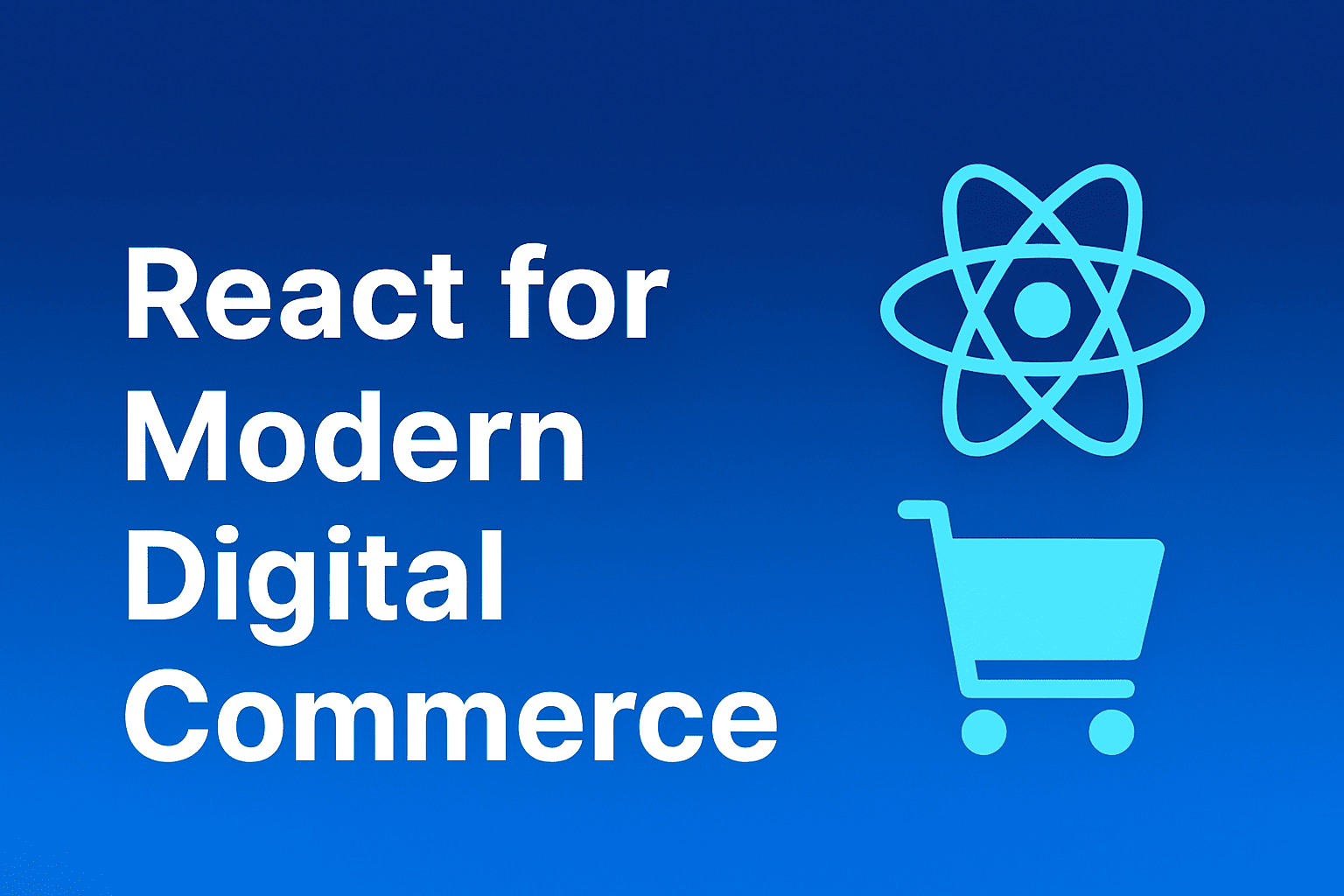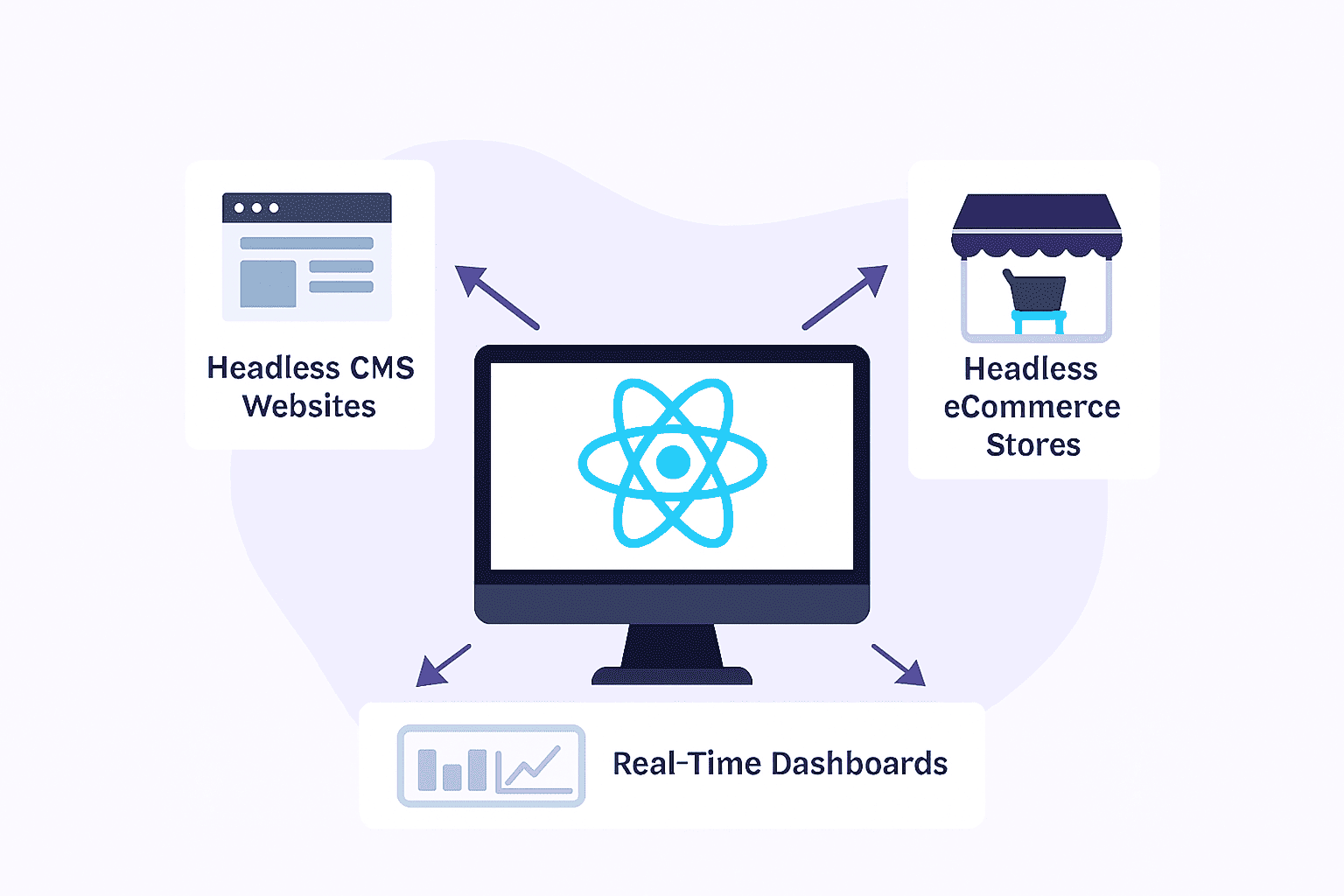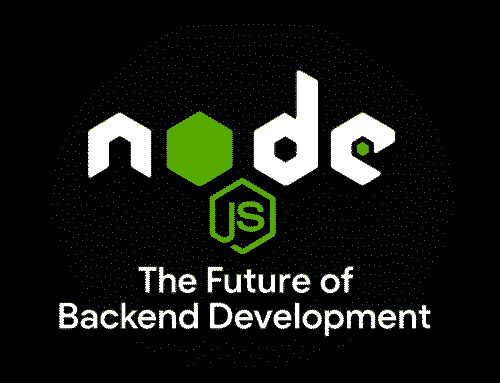React for Modern Digital Commerce
React.js stands out as an ideal choice for headless CMS and e-commerce platforms due to its speed, adaptability, and developer-friendly framework. By coupling React’s powerful front-end capabilities with a headless CMS or eCommerce backend, businesses can deliver engaging, fully tailored digital storefronts. This combination streamlines content management, enables rapid updates, and integrates effortlessly across multiple channels, ensuring both operational efficiency and exceptional customer experience. Ultimately, React unlocks the full potential of headless architecture, giving brands the agility and innovation needed to remain competitive in digital commerce.

What is Headless CMS and eCommerce?
Headless CMS and headless eCommerce are systems where the backend, which handles content or product management, is decoupled from the frontend presentation layer. Instead of dictating how information is displayed, the backend provides APIs (such as REST or GraphQL) that frontend frameworks like React.js can utilize to render content and products.
Advantages of Headless Architecture
- Flexibility: Design fully customized frontends without being limited by backend structures.
- Omnichannel Delivery: Deliver content and products consistently across sites, mobile devices, and multiple digital touchpoints.
- Faster Updates: Update your backend or frontend independently without breaking the system.
Key Benefits of Headless Architecture
1. Flexibility: Headless architecture empowers developers to create custom frontends that align with specific business needs. Whether building a content-heavy site, a feature-rich online store, or a mobile-first app, teams have the freedom to shape the user experience without backend restrictions.
2. Omnichannel Delivery: A headless setup enables a single backend to distribute content or product data across multiple platforms simultaneously. From websites and mobile applications to PWAs, kiosks, and IoT devices, businesses can deliver a consistent experience everywhere, saving time and ensuring accuracy across channels.
3. Faster Updates and Iteration: Because the frontend and backend operate independently, updates can be made to either layer without disrupting the other. This decoupled structure allows teams to launch new features, redesign interfaces, or refresh content rapidly, improving time-to-market and operational agility.
4. Scalability: Headless systems are built to grow with your business. Adding new sales channels, scaling to larger audiences, or integrating third-party tools becomes seamless, without the need to overhaul the foundation. This adaptability makes it a long-term, future-ready solution.
5. Performance Optimization : By separating backend processes from frontend delivery, headless approaches improve speed and responsiveness. Frameworks like React.js can request only the necessary data, render components quickly, and ensure smoother experiences for end users.
Why React.js is Ideal for Headless Systems
1. Component-Based Development: React’s modular architecture allows developers to build reusable UI components—such as product cards, menus, or content blocks—that can dynamically pull data from a headless CMS or eCommerce backend. This reusability speeds up development, reduces redundancy, and ensures design consistency throughout the application.
2. Built for API-Driven Workflows: Since headless systems depend on APIs, React is a natural fit. Its architecture makes it straightforward to fetch, manage, and render data from both REST and GraphQL APIs, enabling smooth, data-driven digital experiences.
3. Performance & SEO Advantages: When paired with frameworks like Next.js or Gatsby, React supports server-side rendering (SSR) and static site generation (SSG). These features lead to:
- Faster page loads
- Improved search engine rankings
- Enhanced user experience
For content-heavy websites and eCommerce platforms, these optimizations can directly boost engagement and conversion rates.
4. Omnichannel Delivery: React goes beyond the web. With React Native, businesses can leverage the same headless backend to power mobile applications, ensuring consistent branding and seamless experiences across devices and platforms.
5. Strong Ecosystem & Community Support: React boasts a massive ecosystem of tools, libraries, and community support. From UI kits like Material-UI and Tailwind CSS to state management tools such as Redux and Zustand, developers have everything needed to build scalable, high-quality headless applications efficiently.
Use Cases of React.js with Headless CMS and eCommerce

📰 Headless CMS Websites: Use platforms like Contentful, Strapi, or Sanity as the backend to manage content. React fetches content through APIs and renders it dynamically on the frontend. The result? A flexible, fast, and highly customizable website.
🛒 Headless eCommerce Stores: Platforms, including Shopify, BigCommerce, and Magento, offer APIs for catalog, pricing, and order management. React uses these to power custom storefronts that match your brand and deliver effortless shopping experiences.
📊 Real-Time Dashboards React can integrate with ERP, CRM, or analytics systems to build interactive dashboards. This enables businesses to access real-time insights and visualize data instantly—without being tied to rigid, monolithic platforms.
Conclusion
React.js is a powerful choice for headless CMS and eCommerce, combining speed, flexibility, and scalability to deliver modern digital solutions. By separating the backend from the frontend, businesses gain the freedom to build distinctive, high-performance experiences that adapt seamlessly across multiple channels.
From content-rich websites and dynamic online stores to mobile-first applications, React enables faster development, smooth integrations, and scalable growth.
In today’s competitive digital landscape, adopting React.js for headless architecture is more than just a trend it’s a forward-thinking strategy that empowers brands to innovate quickly, provide outstanding user experiences, and maintain a lasting edge in the market.


Leave A Comment